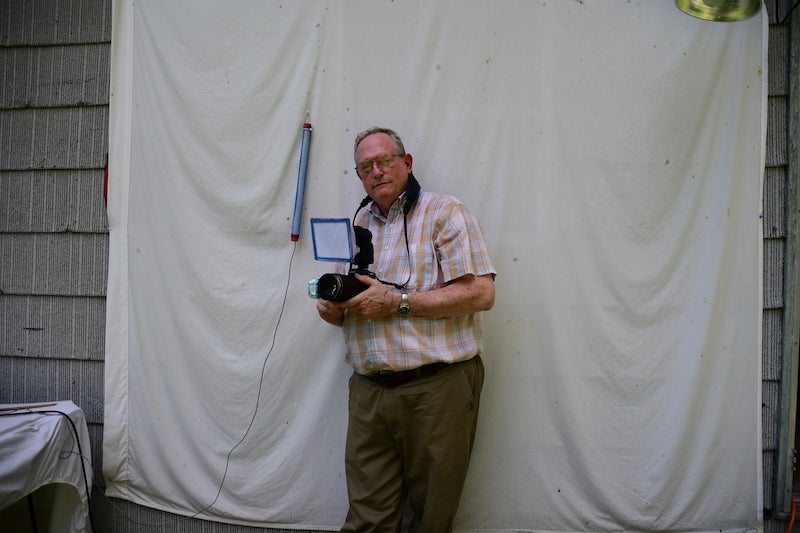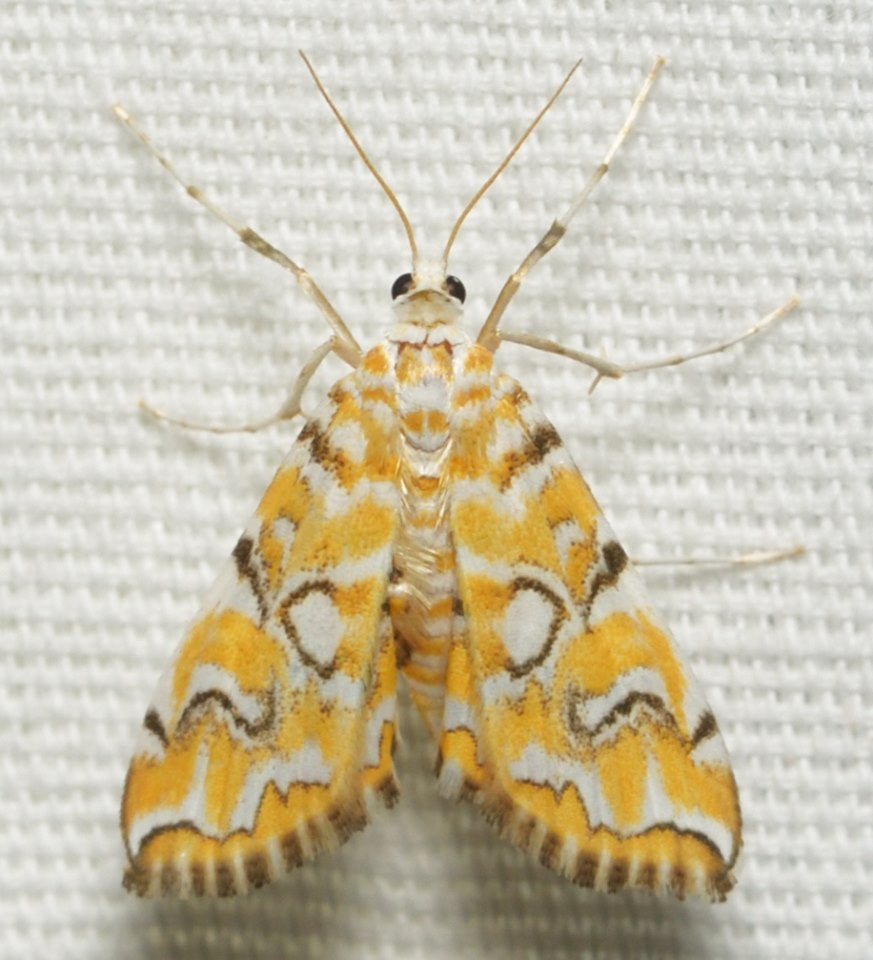
STORY BY JOYANNA LOVE
MOTH PHOTOS BY JOHN MORGAN
As the sun goes down, John Morgan turns on his outside lights and watches the white sheets hung on the side of his house waiting for moths to land.
Morgan has photographed 585 different species, some of which had never been documented previously in Alabama.
His fascination with insects began at an early age.
“I have been infatuated with all things bugs all of my life,” Morgan said.
So much so that on his first overnight campout with Royal Ambassadors at his church growing up he spent the majority of the night looking for insects.
He said it is a “God-given fascination.”
Although he had also been interested in photography from the age of 15, Morgan’s two hobbies did not come together into one until about eight years ago.
Morgan said his interest in photography grew out of looking at Ansley Adams books.
“He was a pioneer in black and white,” Morgan said.
Morgan said Adams mostly took large scale, landscape photos in the western United States. His first camera was 110 mm film, then he got a 35 mm. His equipment has grown with his interest.
It was a trip with the Birmingham Audubon, which Morgan said “is another one of my passions,” that began his interest in photographing moths. Someone new had joined the group and was more interested in photographing butterflies than the birds.
The man was Vitaly Charny, co-author of the book “Butterflies of Alabama,” working on photographs for his next book. Morgan asked Charny if he ever took pictures of moths. Charny said no but suggested that was something Morgan could pursue. Morgan had taken a few shots of moths before this but was not as passionate and dedicated to the documentation as he is now.

Because moths are mostly nocturnal and extremely small, Morgan said they are far less popular than butterflies.
“More than half of the moths, we have in Alabama are smaller than a centimeter,” Morgan said.
Photographing something so small takes specialized equipment and a bit of trial and error to find the best angle.
Morgan uses a lens specifically designed for taking close up photos of extremely small objects.
“You have to really practice with this,” Morgan said of the lens.
He said the lens is designed for photographing subjects that are a centimeter or smaller.
He uses a diffuser he modified on the camera’s flash to keep the details of the insect in focus. Morgan also added a headlamp attachment (not specifically designed for cameras but modified by himself ) to have a light source closer to the subject.
He said each photographer has to learn how to best take the photos they want with the specific equipment that they have.
On the rear exterior wall of his house, Morgan has set up a backlight specifically designed to attract insects with a more traditional outdoor light to attract as many moths as possible. The lights are on either side of a white sheet.
“Without the white sheet, I’d miss them,” Morgan said. “They’d be too small.”
Morgan said he thinks the mercury vapor security light on the opposite side of house is what initially gets the creatures in his yard.
The setup brings most of Morgan’s moth finds to him, although he said he has gone hunting for specific species in order to photograph them.
Morgan said when he first started photographing moths this way, he tried to get the best shot he could before it flew away, not really paying attention to what other bugs may be around it.
“Now, I’m a little more picky with my shots, and I just want to get the moth,” Morgan said.
He will often use a twig to move other insects out of the shot.
The opportunity to learn is what keeps Morgan looking for moths.
“The thing I enjoy the most — I like learning new things,” Morgan said. “I like learning about things that have been here longer than we have. In a lot of ways … the moths that are new to me, especially the ones I find that are new to the state, I look at them as little jewels waiting on me to find them, like I’m dredging a river.”
So far, Morgan has documented 60 or 70 moths new to Alabama. Right now, Morgan is hoping to be the first person to photograph the caterpillar stage of a moth first seen in Alabama in 2012.
“They do know that it is only found on mimosa trees,” Morgan said.
There are some of these on Morgan’s property, so he is hopeful.
He said moths do more than people know and more pollination than they are given credit for.
Once, he saw an io moth and a one-eyed sphinx in the same night.
“(It was) an unbelievable beautiful sphinx,” Morgan
said. “A sphinx is a family of moth that have a very particular shape … the one-eyed sphinx is very colorful purple and gold and its underwings are read and blue.”
He said the sphinx moths sometimes hit the sheets so hard that he thinks they are bumblebees.
One of his favorite moths is the pondside crambid, which is about two centimeters in length.

Morgan photographed this type of moth for only the second time in late May.
Morgan is a member of a few different moth and insect enthusiast groups where members upload photos of specimens that they are trying to identify. He said these groups give him a chance to talk to people who know more about moths than he does. He likes the collaborative atmosphere of discussing photos and determining what species it may be.
One site, iNaturalist uses a pattern recognition system to determine an identification.
“It’s not always correct,” Morgan said.
The most common ways to identify a moth is the overall shape, which usually at least narrows it down to the family. Color, under wings and special markings can help to narrow it further.
Size is often an important factor in determining the species. Morgan uses a ruler to measure the moth when possible. When he does not have a ruler handy, Morgan uses the thread count on the sheet and a mathematical equation to measure the size of a moth.
Guidebooks are helpful in determining which of the 20,000 or more species of moth found in Alabama a particular moth is. Morgan’s work can be seen on BugGuide. Net and iNaturalist.org.
